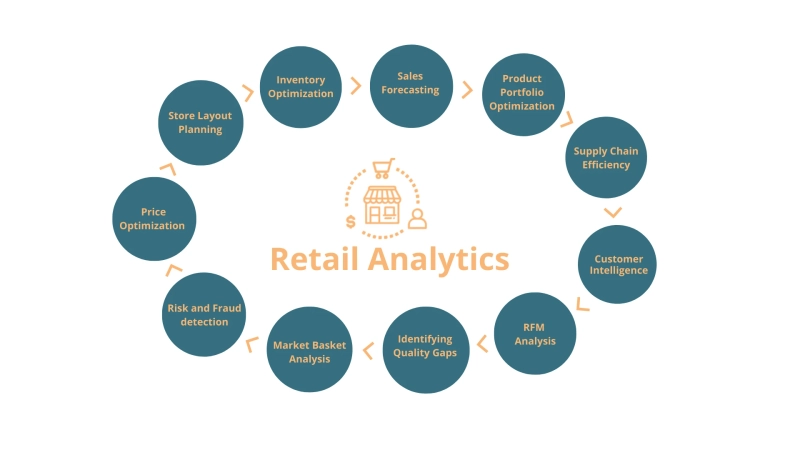Retail is one of the most important industries in today's economy. By using retail analytics, businesses can receive in-depth insights on several topics, including customer buying patterns and preferences, demand forecasting and inventory management, store layouts and market-basket analysis, and price optimization.
Retail scenarios: the power of data and its application
There are numerous potential situations for displaying an effective data analytics solution in retail operations, including tailored promotions and experiences and demand forecasting.
Here we are discussing some scenarios where you can use analytics in a retail business to maximise your profit.
Store Layout Planning
Retail store layout planning influences the customer experience and improves sales and customer satisfaction. Analytics helps retailers improve the merchandise display and attract more customers.
Inventory optimization
Retail analytics tools can help enhance inventory management by forecasting demand-supply changes, identifying stock-out situations, and optimizing supply chain efficiency.
Supply chain efficiency
The supply chain is growing in complexity, with more data and a demand for more responsive relationships with customers. Analytics is also being used to improve speed to market.
Sales Forecasting
With the use of analytics, retailers can examine cross-effects between products, forecast new product sales, account for lost sales, and create complex demand forecasting models using factors like sales, figures, basic economic indicators, environmental, and economic conditions.
Customer Intelligence
Retailers want to understand their customers better to offer them more attractive services and products, and to increase sales and margins.
RFM Analysis
The Theory of RFM segmentation uses three parameters to analyze customer purchasing habits: recency, frequency, and value.
Conducting an RFM analysis on your customer base will improve conversion rates, increase revenue and profits, and create relevant, personalized offers.
Market Basket Analysis
Market Basket Analysis helps retailers to understand customer purchasing patterns and increase sales by determining the products that are likely to be purchased together.
Product Portfolio Optimization
Analytics can be used to optimize product portfolios in the retail sector by understanding what features customers want.
Identifying Quality Gaps
Analytics can be used to detect anomalies in supply chain management, assess a product's market performance, and identify quality defects in a company's products. Data scientists use AI-powered procedures and mechanisms to improve quality in retail businesses.
Analytics can be used to identify fraudulent activities, process related errors, and unusual patterns of products and inventory management.
Retail analytics can help to gain insights from customer purchase behavior and retail data to make smart retail merchandising decisions that boost growth.
Contact virtue analytics for a free consultation.


